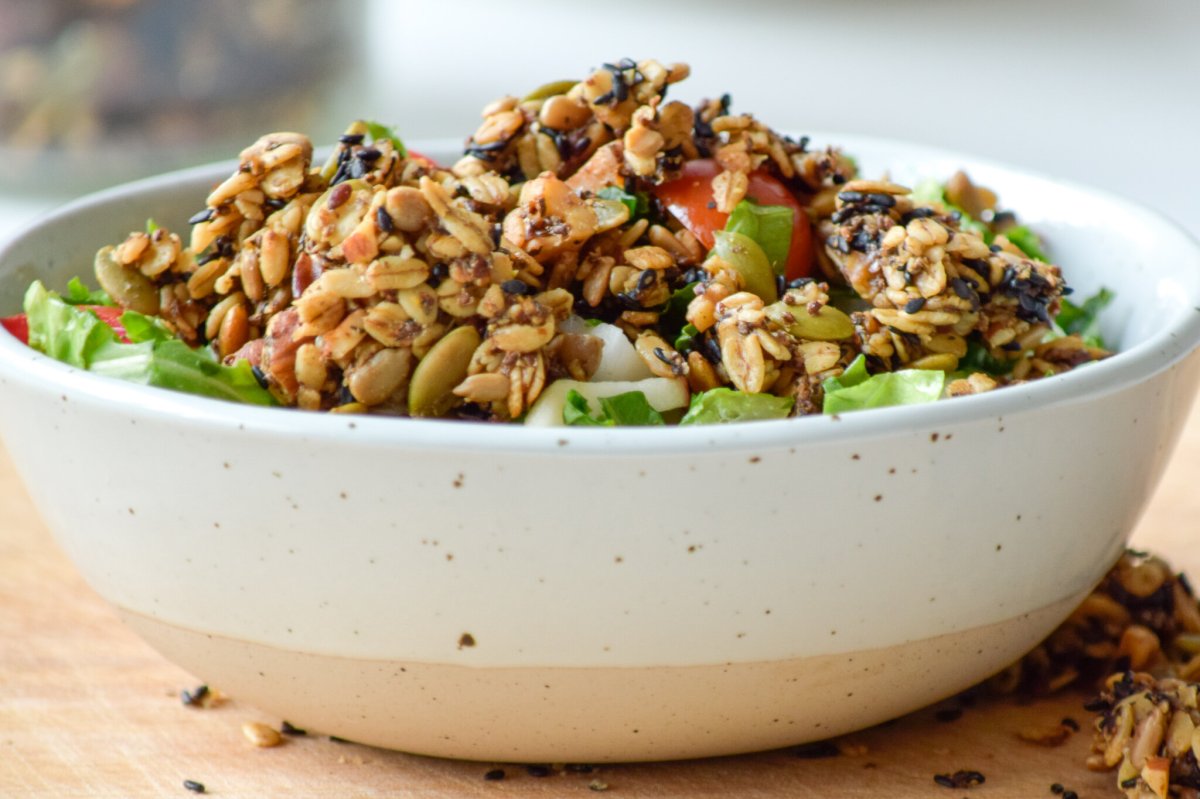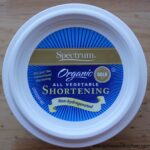Dive into a world of crunchy, flavorful granola, crafted without soy! This guide unveils the secrets to creating both sweet and savory granola blends, showcasing a variety of base ingredients, exciting flavor combinations, and helpful tips for achieving the perfect texture. From understanding the nuances of ingredient moisture content to mastering the art of baking for optimal crispness, we’ll empower you to whip up delicious, allergy-friendly granola that satisfies every craving.
Explore a diverse range of recipes, each designed to cater to various dietary needs and preferences. Learn how to incorporate unique add-ins, elevate your granola with inventive serving suggestions, and ensure your creations remain fresh and delightful for longer. Get ready to embark on a culinary journey that’s both satisfying and surprisingly simple.
Popular Soy-Free Granola Base Ingredients
Crafting the perfect soy-free granola hinges on selecting the right base ingredients. These ingredients form the foundation of your granola, contributing significantly to both its nutritional profile and textural appeal. The choices you make here will directly influence the final product’s crunch, chewiness, and overall flavor.
Soy-Free Granola Base Ingredients: Nutritional Benefits and Texture
Choosing the right base ingredients is crucial for a successful soy-free granola recipe. The following table details five popular options, highlighting their nutritional benefits and textural contributions. Understanding these characteristics allows for informed ingredient selection and customization to achieve your desired granola profile.
| Ingredient | Nutritional Benefit | Texture | Common Substitutions |
|---|---|---|---|
| Oats (rolled or steel-cut) | Excellent source of fiber, promoting digestive health; provides sustained energy due to complex carbohydrates. | Rolled oats offer a softer, chewier texture; steel-cut oats provide a more substantial, hearty bite. | Other whole grains like quinoa flakes or barley flakes. |
| Quinoa flakes | Complete protein source, containing all nine essential amino acids; rich in iron and fiber. | Adds a slightly nutty flavor and a delicate, slightly crunchy texture. | Other grains like millet or amaranth. |
| Brown Rice Krispies | Good source of complex carbohydrates; relatively low in fat. | Provides a light, airy crunch, contributing to a less dense granola. | Puffed brown rice or other puffed grains. |
| Coconut flakes (unsweetened) | Source of healthy fats (medium-chain triglycerides), fiber, and manganese. | Adds a delicate sweetness and a pleasant, slightly chewy texture. | Other nuts or seeds, but will alter the flavor profile. |
| Sunflower seeds | Rich in vitamin E, selenium, and healthy fats; good source of protein. | Provides a satisfying crunch and adds a slightly earthy flavor. | Pumpkin seeds, pepitas, or other seeds. |
Impact of Moisture Content on Granola Texture
The moisture content of your chosen base ingredients significantly influences the final texture of your granola. Ingredients with higher moisture content, like rolled oats, will generally result in a chewier granola. Lower moisture content ingredients, such as puffed rice or sunflower seeds, contribute to a crispier texture. Careful consideration of this aspect allows for precise control over the desired texture. For example, using a higher proportion of rolled oats will create a softer, chewier granola, while increasing the amount of puffed rice will yield a crispier, lighter granola. Balancing these ingredients allows for a wide range of textural possibilities, from a soft and chewy granola to a delightfully crunchy one.
Soy-Free Granola Variations and Add-ins

Elevating your soy-free granola to new heights of flavor and texture involves thoughtfully selecting add-ins that complement the base ingredients. The possibilities are vast, allowing for customization to suit individual preferences and dietary needs. The following examples showcase the diverse textural and flavor profiles achievable through strategic additions.
Five Unique Granola Add-Ins and Their Impact
Five unique add-ins—pumpkin seeds, pepitas, cranberries, cinnamon, and shredded coconut—offer a compelling combination of flavors and textures to enhance any soy-free granola recipe. Each contributes distinct qualities that transform the overall sensory experience.
- Pumpkin Seeds: These offer a subtly sweet, nutty flavor with a satisfying crunch. Their slightly earthy notes pair well with both sweet and savory granola variations. Imagine the vibrant green hue contrasting beautifully with the golden-brown granola clusters.
- Pepitas (Pumpkin Seeds): While technically the same seed as pumpkin seeds, pepitas are specifically the shelled seeds, offering a cleaner, milder flavor and a crispier texture than their unshelled counterparts. Their bright white color adds a visual contrast.
- Cranberries: The tartness of dried cranberries provides a delightful counterpoint to the sweetness of the granola base. Their chewy texture adds a pleasant textural contrast to the crisp granola clusters. Imagine the deep ruby red color adding a splash of vibrant color.
- Cinnamon: A warm, inviting spice, cinnamon adds depth and complexity to the flavor profile. Its aromatic warmth complements both sweet and savory granola blends. The reddish-brown hue subtly enhances the granola’s overall color.
- Shredded Coconut: Sweet and subtly tropical, shredded coconut contributes a unique sweetness and a pleasingly soft texture that contrasts with the crunch of the granola. The delicate white strands add visual appeal and a tropical flair.
Incorporating Add-ins at Different Stages
The optimal time to incorporate add-ins depends on their properties and desired effect. Adding ingredients at different stages of the granola-making process affects their final texture and flavor integration.
- Early Incorporation (Mixing with Dry Ingredients): Spices like cinnamon are best added at the beginning, allowing their flavor to fully infuse into the granola during baking. This ensures a consistent distribution of flavor throughout the granola.
- Mid-Stage Addition (Before Baking): Nuts and seeds, like pumpkin seeds and pepitas, are usually added before baking. This allows them to toast lightly, enhancing their flavor and creating a satisfying crunch. Mixing them in before baking ensures even distribution.
- Post-Baking Addition (After Cooling): Dried fruits like cranberries and shredded coconut are often added after baking. This prevents them from burning during baking and preserves their texture and moisture. Adding them after cooling ensures they don’t become overly soft or sticky.
Serving Suggestions and Storage Tips
This section explores delightful ways to enjoy your homemade soy-free granola, from the classic to the creatively unexpected. We’ll also delve into the best practices for preserving its delightful crunch and extending its shelf life. Proper storage is key to maintaining the quality and flavor of your granola, ensuring each bite remains as satisfying as the first.
Creative Serving Suggestions
Imagine the possibilities! Your freshly made soy-free granola transcends the typical breakfast bowl. Its versatility shines through in a range of applications, adding texture and flavor to both sweet and savory dishes.
- Yogurt Parfaits: Layer creamy yogurt (dairy or non-dairy) with your granola and fresh berries for a vibrant and satisfying breakfast or snack. The contrasting textures and flavors create a delightful sensory experience. A drizzle of honey or maple syrup adds an extra touch of sweetness.
- Trail Mix Powerhouse: Elevate your trail mix with a generous helping of your granola. Combine it with nuts, seeds, dried fruits, and even dark chocolate chips for a customizable energy boost on the go. The granola adds a satisfying crunch and a boost of flavor complexity.
- Salad Topping: Add a surprising crunch and nutty sweetness to your salads. Sweet granola pairs perfectly with fruit salads, while savory granola complements heartier greens and roasted vegetables. Consider a granola-topped chicken salad for a complete meal.
- Overnight Oats Enhancement: Stir your granola into your favorite overnight oats recipe for added texture and flavor. The oats will absorb some of the granola’s flavors, creating a unique and delicious breakfast option. Consider adding chia seeds or flax seeds for extra nutrition.
- Ice Cream Topping: Sprinkle your granola generously over your favorite ice cream for a delightful textural contrast. The warmth of the granola contrasts beautifully with the coolness of the ice cream, creating a memorable dessert experience. A scoop of vanilla ice cream with a sprinkle of sweet granola is a classic combination.
Optimal Granola Storage for Extended Freshness
Maintaining the crispness and flavor of your homemade granola requires careful attention to storage. Exposure to moisture and air is the granola’s biggest enemy, leading to staleness and a loss of its delightful crunch.
- Airtight Container: Store your granola in an airtight container, preferably one made of glass or food-grade plastic. This prevents moisture from entering and preserves the granola’s crispness.
- Cool, Dry Place: Keep the container in a cool, dry place, away from direct sunlight and heat sources. A pantry or cupboard is ideal. Avoid storing it in the refrigerator, as this can lead to moisture absorption and softening.
- Shelf Life: Properly stored soy-free granola typically maintains its optimal quality for 2-3 weeks. However, it may remain edible for a longer period, although the texture and flavor may subtly change.
Crafting the perfect soy-free granola is a journey of culinary exploration, blending textures, and balancing flavors. This guide has equipped you with the knowledge and recipes to create delightful, allergy-friendly granola that’s as versatile as it is delicious. Whether you prefer a sweet and nutty crunch or a savory and spicy kick, the possibilities are endless. So, gather your ingredients, embrace the process, and enjoy the rewarding experience of creating your own signature granola masterpiece!
FAQ Summary
Can I store granola at room temperature?
Yes, but for optimal freshness and crispness, store it in an airtight container in a cool, dry place. Refrigeration is recommended for longer storage.
How long does soy-free granola last?
Properly stored, soy-free granola can last for 2-3 weeks at room temperature or up to a month in the refrigerator.
What can I substitute for oats if I have allergies?
Consider using a blend of other grains like quinoa flakes, amaranth, or buckwheat groats as substitutes for oats.
Can I make granola ahead of time?
Absolutely! Making granola in advance allows the flavors to meld, resulting in a more complex and enjoyable taste.


